Hello and welcome to another audio version of Burnt Toast!
Today I’m delighted to be chatting with Crystal Maldonado who is the author of Fat Chance, Charlie Vega, one of my favorite YA books—maybe one of my favorite books, period. Crystal also has a new book coming out in February called No Filter and Other Lies.
Crystal
Thank you so much for having me. I can’t believe you said it’s maybe one of your favorite books. I’m gonna go cry.
Virginia
I cried when I read it. I love it very deeply. So I’m excited to talk about it. I’ve been fangirling you on social media since the book came out.
Crystal
I fangirl you! When you reached out, I was like, “Oh my god, my dreams are coming true!”
Virginia
Well, get ready for a mutual fangirl episode because that’s what we’re doing. Why don’t you start by telling us a little more about yourself?
Crystal
As you mentioned, I am the author of Fat Chance, Charlie Vega, which was my first book ever.
I have a day job where I do social media marketing for higher education. I live in Western Massachusetts. I have a great husband, who was the inspiration behind the love story in Fat Chance, Charlie Vega. Together we have this adorable dog, Toby, and we have a two-year-old named Maya. I love things like glitter. I love Beyoncé. I love having a lot of feelings and I love trying to dismantle things like fatphobia and capitalism.
Virginia
I am so here for dismantling fatphobia and capitalism with glitter.
Crystal
We all bring something, and I bring glitter.
Virginia
Glitter is a controversial topic in my house because my husband hates cleaning it up. He can’t even talk about it without becoming enraged. My daughters and I are like, “But, GLITTER!”
Crystal
It sparkles! What more do you need?
Virginia
I’m always like, “Okay, let’s do the glitter project outside,” because I want to hold space for his mess intolerance. It’s fair. But glitter nail polish isn’t messy, so…
Crystal
Glitter nail polish, that’s a good one! I’m going to keep that in my back pocket because my husband wants me to feel like I can do whatever I want with glitter, but then sometimes he finds a rogue glitter on his head.
Virginia
It is true that once glitter enters your home, it will never not be in your home. I don’t think we’ve purchased glitter for an art project in five years and I still find it places. It is problematic in that way, but it is also very joy-inducing.
Crystal
It’s just sprinkling joy that you find later.
Virginia
Some joy on your bathroom floor!
Okay, let’s talk about Fat Chance, Charlie Vega. When I read it last year, it was such a bright spot in pandemic life. I love so much about Charlie and how you’ve subverted a lot of expectations and stereotypes about her. What is Charlie’s origin story for you?
Crystal
I really went into this book wanting to write a fat romcom. As someone who just loved reading love stories and romances, especially within the young adult genre, I felt like I spent my whole life wondering if there was room for fat folks to fall in love. It seemed like I never saw that. I was lucky if fat people existed at all in young adult books. If they did exist, they had to fit into these weird boxes that didn’t make sense and certainly weren’t anything like me. I was a total dreamer, like Charlie, and I wanted to be kissed and I wanted someone to love me.
I wanted to make Charlie into this person who is soft. She is dreamy, and wants what she wants. She embraces that yearning, in ways that I think fat people don’t always get to do.
I have always felt that if I, as a fat person, yearn for something, it’s considered pathetic. I’m not supposed to want anything, you know? That’s weird! I am a human. I’m allowed to want.
I wanted this fluffy book that had all of these typical romance tropes, but for a fat girl to be the main character. She gets to be desired. She doesn’t lose weight. And she gets to fall in love with herself, too.
I wrote the book during the 2016 election, as well. I was really going through it at that time, feeling like I was living in a society that was telling me I didn’t belong in any realm. This book was my response. Like, “Oh yeah? Well, I’m going to write a book that celebrates all the things you don’t like about me.”
Virginia
Yearning is such a big part of that life stage! But we don’t have representation of kids yearning and getting what they yearn for when they are in marginalized bodies. I love that she has desires. Those are some of the most fun parts to read. It’s really sweet and sexy. I can imagine so many girls in all body types, but particularly bigger girls, appreciating that.
Crystal
We deserve that, too.
Virginia
Let’s talk a little bit about what you were writing against. Obviously there was Trump, but also the way fat kids are portrayed in YA literature. Charlie does talk about her weight. She is aware of her size and how her mom is dealing with it, but it is not a book about her needing to change. She just has to own the fact that she does accept herself.
Can you talk about what you were trying not to do?
Crystal
It’s really important for fat folks to have both stories that talk a lot about being fat and that don’t acknowledge fatness at all. With this book, I was trying to immerse the reader in being fat and how it invades everything you think about because it is what society sees. That’s the world Charlie’s living in. She knows she would probably love herself a whole lot more if the rest of the world didn’t have big opinions about her body and her eating habits and exercise habits.
But I wanted to push back on the idea that all fat people hate themselves inherently. Charlie doesn’t hate herself. Is she down on herself? Yeah, of course. Does she experience insecurities? Yes, she’s a teenager. She’s a human. We all feel that. I wanted to show that it’s way more complicated than that.
So she’s not this fat girl who wants to hide herself. She wants to wear cute clothes and she wants to have all of these great experiences. I wanted her to have all of that without ever dieting or losing weight. I’ve read a lot of books where there’s a fat person and then they lose weight, or they get thin, and then they live happily ever after.
Virginia
I love Jennifer Weiner’s books so much, but I still remember in Good in Bed when Cannie starts riding her bike a lot. She doesn’t lose weight, but it says she “shifts it around.” I just remember thinking, why was that necessary? We love Cannie! We’ve been rooting for Cannie this whole book. Why does weight have to be part of it?
[VA Note: It’s possible I’m thinking of Rose in In Her Shoes here. It’s also possible they both have this plot line!]
Crystal
It feels so demoralizing when you’re the fat girl reading these stories. It’s like, “Well, I guess I inevitably have to lose weight if I want happiness or love.”
There’s also this idea that the fat people in stories are the sidekick-bestie-asexual-funny person. They don’t get to desire or be desired. I didn’t want that for Charlie. I wanted her to come out first thing and say, “I dream about being kissed.” I think that’s way more accurate. She is this person who wants to go buy a cute bra and also be super funny and sarcastic. Why not both?
Virginia
Speaking of sidekicks, you populate her world with such an amazing friend group. They are not one-dimensional sidekicks at all. All of her friends are very fully formed characters, dealing with their own stuff in different ways. You layer in many intersections of race and gender identity along with body diversity. And also, Charlie lives in this mostly white town and struggles with that experience.
How did you think about what other stories you wanted to tell through her friends?
Crystal
In my experience growing up in a mostly white town, anyone with any semblance of a marginalized identity is drawn together and finds community with one another because, for whatever reason, you don’t fit in with the majority. That is how I viewed Charlie and her friends, as this tight group of people who come together because they feel othered in some way. I wanted her friends to have beautifully robust and nuanced lives with their own things going on.
I spent a lot of time on Tumblr when I was growing up. We would complain about how there’s a wonderful black best friend, but they never get to do anything. They clearly exist only to help this white main character achieve something. I wanted to think of every one of Charlie’s friends as characters who I would want to read a book about. That’s what it’s like in real life! People have their own lives, they have their own experiences.
At the same time, I am a fat Puerto Rican girl and I’m cisgender. I didn’t feel, with some of those identities, that I could tackle them in that first person, intimate way that I can with Charlie. Amelia is black, pansexual, and very sporty. I don’t know about any of those identities (I identify as bi, not pan) but I have friends who have had these experiences. I wanted to talk about these experiences but not in a first person way because I didn’t feel like I could do them justice. At the same time, I wanted to shed light on some of these different identities to make you think about things in ways that you might not have. Especially if you’re from a very white town, or a town that doesn’t have these other identities, you can meet these people through Charlie.
Virginia
When Amelia comes out to her parents, it’s so moving. I love how you followed those journeys and wove them in.
What are you hearing from readers? What kind of responses have you gotten, especially from fat kids reading the book?
Crystal
It has been so incredible. People have reached out and shared an appreciation and a sense of validation in reading Charlie’s story. It’s not just people who are her age and it’s not just people who are fat, it’s different age ranges and it’s different body types. Some people who reach out are fat, but they're not brown, or they're brown, but they're not fat. To hear from people who have a similar identity to me, to hear them say they get to look at this book and see a character that looks like them, is meaningful. That’s exactly what I wanted and yearned for when I was fourteen or fifteen. It’s been really humbling to hear from people who are like, “Oh, I consider myself a Charlie” and “I have an Amelia.” That is the best. I’ve even had a couple of people who have recreated the cover. I’m like, “Oh my God, can I just be besties with all of you? Because you’re incredible.”
Virginia
What I often hear from parents of kids in bigger bodies is that they want a book where the fat kid is just the hero or the heroine, where it’s not about their body acceptance journey. As much as Charlie is reckoning with her weight in this book, your book is one of the best examples of that. She has her own journey. So, for parents who are looking for that, this is the book that you’re looking for. There is no weight loss. This is a really good one to have in family libraries for that reason. My older daughter is eight and she’s probably a couple years out from reading it, but not that far. I think it works for a wide variety of age ranges.
Crystal
Especially as you’re getting into those awkward middle school years, Charlie’s your girl because she has not been kissed at the start of the book. She’s sixteen and she feels like her peers have surpassed her. She’s dealing with a complicated mom and grief in her household. There’s a lot that younger folks might relate to. Some YA is more mature, and we need that, too, but when we meet Charlie, she still feels like she is just at the beginning.
Virginia
Another thing that you navigate in the book is the online communities that Charlie is a part of. She finds fat influencers and she’s in that body positive space online. That’s something I really struggle with, with our kids, especially right now with everything we’re hearing about Instagram and how great it is at teaching kids to have eating disorders. I am definitely wrestling with thr desire to never let my children online. Your book is a reminder to me that kids in marginalized bodies need to find community and if they’re not finding community at school, which not everyone is going to in middle school in high school, online can be that portal.
Do you see online communities as a force for good? Or a force that needs to be tempered? How are you thinking about it?
Crystal
I think it can be good and it can have very toxic sides as well. I see this a lot as someone who manages social media for a brand. I use social media as myself, of course, but I also see the flip side where there’s a lot of hate and a lot of anger. I wanted to show that social media has the power to be toxic, but at the same time it can bring you together with people who are like you, that you might otherwise struggle to meet.
When I was growing up, I was very much the girl on Tumblr and—I’m dating myself—I was also on LiveJournal a lot. There was this amazing community there called the Fatshionista community. It was just fat people posting pictures of themselves wearing clothes. It was before the super posed, beautiful Instagram photos. It was truly just fat people being like “Here’s what I’m wearing today. What do you think?” At that time, the internet was very ugly and toxic, and especially for fat folks. Let’s be real, it still is, but this was a little safe haven. It was a nice place where I could go and see bodies that looked like mine for the first time in my life.
So I think social media can be super, super powerful. But when you’re part of a marginalized community, you have to curate your feed. Sometimes that means not following mainstream media, even well-meaning ones. You’re following hashtags or you’re finding people through those hashtags. You can find influencers or people who are thinking about this stuff and talking about it.
For Charlie, the most powerful thing is just being able to see girls like her who are out there rocking cute outfits, and getting style inspiration. That helps her build her confidence because she’s like, “Hey, this person has a body like mine, and they look amazing. So could I look amazing.” I would say unfollow literally anybody who makes you feel even a tiny bit bad about yourself.
Virginia
As parents, we’re figuring out how to teach our kids media literacy skills, which we all need to learn, too. We are 100 percent learning with our kids. If your kid is begging to get on Instagram and you’re on the verge of losing that battle, how can you experience it with them and help them seek out these little pockets of goodness, as opposed to just mindlessly following every influencer?
Crystal
Ignore who Instagram suggests you should follow and you make the list.
Virginia
This is the type of stuff I wish they were teaching in middle school and high school. I think teaching kids how to navigate these spaces would be really powerful.
You are a writer and you have a day job and you’re a mom, so you’re juggling all of the things. I love to ask fellow writers a little bit about their writing process, like where do you write? When do you write? What do you like about your process? What do you hate about it? It sounds like you’re probably fitting it in around a lot of things, so tell us what that’s like.
Crystal
Before I had my kid, my writing routine was more about the vibe and curating this feeling and going to coffee shops. Now I’ve gotten pretty good at writing anywhere. I just need my laptop and my headphones and a good playlist on Spotify and my toddler not to be ripping my laptop out of my hands.
I have a desk set up in my bedroom, in this small alcove, and it feels really cozy. I hung up little twinkle lights and it’s got some natural light. I’m very much a feelings and mood person, so that combo helps me get out of my head and move into a different space so that I can think about characters and dialogue. As long as I can put my headphones in and turn the world off, that’s where I’m at.
The thing I hate the most about my current writing process is that it is so chaotic. I never know when I’m going to have the time to actually sit down and write. Sometimes, at the end of the day, if my kid went to sleep early, and I don’t have any chores to do (knock on wood) and I’m caught up on things, now I can write—but I’m so tired. Vegging out wins a lot of the time, I’m not going to lie.
Virginia
I mean, it needs to happen. You need to rest. There are weeks where I’m like, “There are just no more words. I have nothing. I can’t write today.”
Crystal
I know some people like writing every day, they live and die by that and that’s what works for them. I am envious, but I’m just going to write when I can. I also like to think that daydreaming is part of the writing process, at least for me, and thinking about characters. I count that as writing now.
Virginia
I think that absolutely is the work. It’s the work that we can do while driving and running errands, thinking through an article in my head while walking the dog. You can do that work while you’re doing the rest of your life in a way that you cannot when it’s time to sit down and be at the computer. You need to shut out the world. I think building that daydreaming muscle is actually quite helpful because it makes it easier to focus once you sit down.
I feel like there is a parallel between the write-everyday people and the workout-everyday people, where you have to ask, “Is this perfectionism serving you? Or is it an obsession that you can’t step back from?”
As a journalist, I literally can’t write every day because often I’m researching and reporting and I need to do that in order to write. I tend to have one week of the month when I’m producing a book chapter that I’ve been researching and reporting all month. I’ll have 3,000-word days of getting out a chapter. For a long time, I felt guilty, like I should be doing it more systematically and writing smaller chunks. And then I just realized, this is how I do it.
Crystal
If people write every day and that works for them, I think that’s truly incredible and I’m in awe. Writing is so individual. You can try every method that you hear about from great writers and you could fail at all of them, because it’s just not how your brain works or how you think creatively. You have to find what works for you.
Virginia
And then you have to make peace with that being what works for you, because it often doesn’t feel very satisfying.
Crystal
If you’re not a morning person, being a part of the 5 am writers club is never gong to work, so don’t bother.
Virginia
And if you are a morning person, like me, trying to push yourself to work after your kids go to bed is always going to fail. TV will win every time.
Tell us about the new book that’s coming out in February!
Crystal
This book is called No Filter and Other Lies. It’s another young adult book and it features another fat brown girl.
Virginia
I was hoping it would!
Crsytal
We were just talking about social media and that’s really what this next book deals with, Instagram specifically. It’s about a 17-year-old girl. Her name is Kat Sanchez, and she is a an artist, a photographer. She really wants to gain clout and gain recognition for her work, but it’s not happening. Every time she posts, it falls flat. She’s seeing her classmates get recognition, and her friends followers growing, but not hers. She has this complicated family and weird romance going on. She feels like a fraud in a lot of ways and she doesn’t have everything figured out. Then there’s this particularly bad night that leads her down a rabbit hole of not wanting to be herself anymore. So she decides that she’s going to steal her friends’ pictures and become someone else entirely on Instagram, and be a literal “Kat-fish,” with a “K.”
Virginia
Oh, I see what you did there.
Crystal
The book explores these ideas of what is real versus what is fake on Instagram, and how even people who are the closest to it—like Kat who is a photographer and knows there’s photo editing—still struggle to see that not everything we see is is real. It really dives into how to manage yourself on social media, how to stay sane and come out on the other side and appreciate who you are, and appreciate your existence as it is.
Virginia
Oh, my gosh, I can’t wait to read that. Again, you’re writing a book that will resonate with kids because they’re struggling with this, and will also be so helpful for adults because we also don’t know how to do this.
I always hate to ask, when you’re getting ready to promote one book, if you’re working on another book, but I am curious to know.
Crystal
I am working on a third book. No Filter and Other Lies comes out February 1, 2022. Then this next book I’m working on returns to a fluffy, rom-com-esque world. It’s about all of the delightful things that come with fall in New England. It features this fat girl who realizes she has polycystic ovarian syndrome and wants to hide this from the world, while also trying to figure herself out. That’s all I’ll say for now.
Virginia
I already want to preorder it. I’m so excited, Crystal, that you are writing these books and that there are going to be so many of your books out there for all girls. It is so needed, so thank you.
We will wrap up with my new recommendation segment, where we talk about just anything we’re loving. It doesn’t have to be a product, but it can be a product, or it can be an experience. What do you have for us?
Crystal
So, speaking of being at the end of the day and just needing to like lean into TV, Nailed It! on Netflix just came out with a new season. It’s the baking show that Nicole Byer hosts. I am a huge fan of Nicole Byer. I just think she’s so funny and she’s also fat and she has these fabulous outfits on in each episode. You get to kick back and watch a bunch of bakers be terrible at baking while she makes jokes at their expense, but in the most wholesome and sweet way. I have been watching this new season and just loving every second because I get to turn my little brain off. I look at her amazing outfits and just wonder if Nicole is looking for a bestie.
Virginia
I haven’t watched this at all and I’m now asking myself how I’ve missed it. It’s going in the queue.
I’m going to recommend pencil cactuses. People who follow me on Instagram know that I am a plant lady. People always ask what’s a good house plant to start with, and there’s a bunch that you see all the time. But pencil cactuses are a really good starter house plant that gets overlooked. They’re very hard to kill. You only have to water this one maybe every two weeks. It does need a fair amount of light; it wants your sunniest window. It’s actually not a cactus—it’s a Euphorbia, if you want to get technical—and it has all these little, narrow shoot things. As it gets colder, they start to develop this red color that’s really pretty.
So pencil cactuses are just delightful and I feel like nobody’s talking about them and I want to be the person who makes them trendy.
Crystal
Note to self: Buy a pencil cactus.
Virginia
You won’t always find them in the big box store plant sections, but any smaller plant store should have them. You can definitely find them on Etsy. You can get a little one and it will grow big, so don’t feel like you have to really invest. (Yes, mine is now giant but it started small!) Just get a small one and put it on your window sill and enjoy.
Crystal
I really want one, you’ve totally sold me.
Virginia
Well, my work here is done. Crystal, tell listeners where they can follow you and stay tuned for all your book updates.
Crystal
If you want to follow me and feel my feelings and see Beyoncé pictures and see where glitter is going to end up, I am @CrystalWrote (past tense of write) everywhere. I’m on Instagram, Twitter, and TikTok, and my website is CrystalWrote.com.
Virginia
Thank you, Crystal! And thank you so much for listening to Burnt Toast. If you liked this episode and you aren’t yet a subscriber, please subscribe!
If you are a subscriber, thank you so much. Please consider sharing Burnt Toast on social media or forwarding this to a friend.
The Burnt Toast logo is by Deanna Lowe.
Burnt Toast transcripts and essays are edited and formatted by Corinne Fay, who runs @SellTradePlus, an Instagram account where you can buy & sell plus size clothing.
Thanks for listening! Talk to you soon!




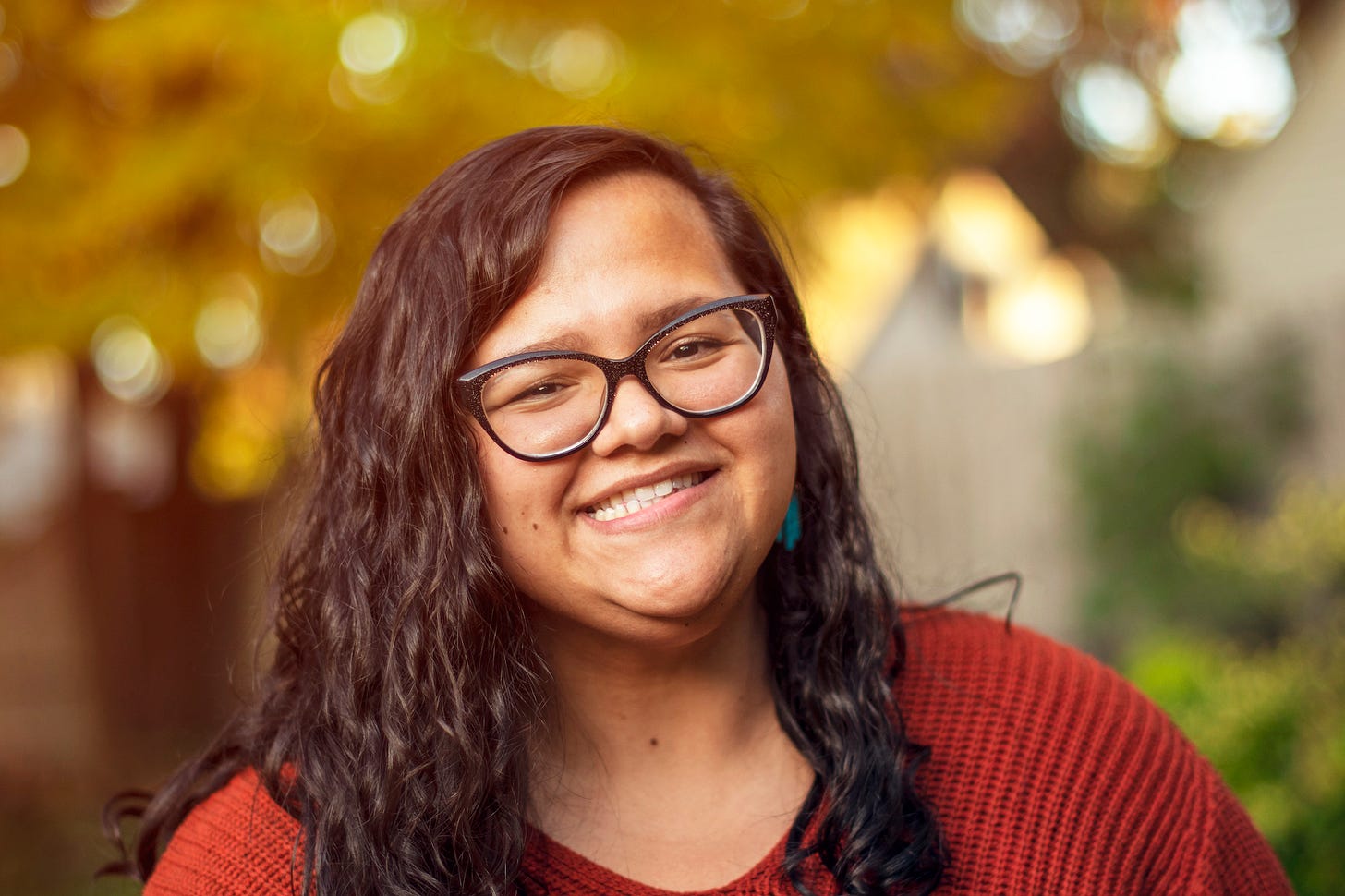

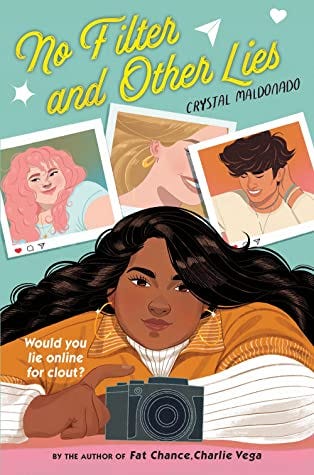
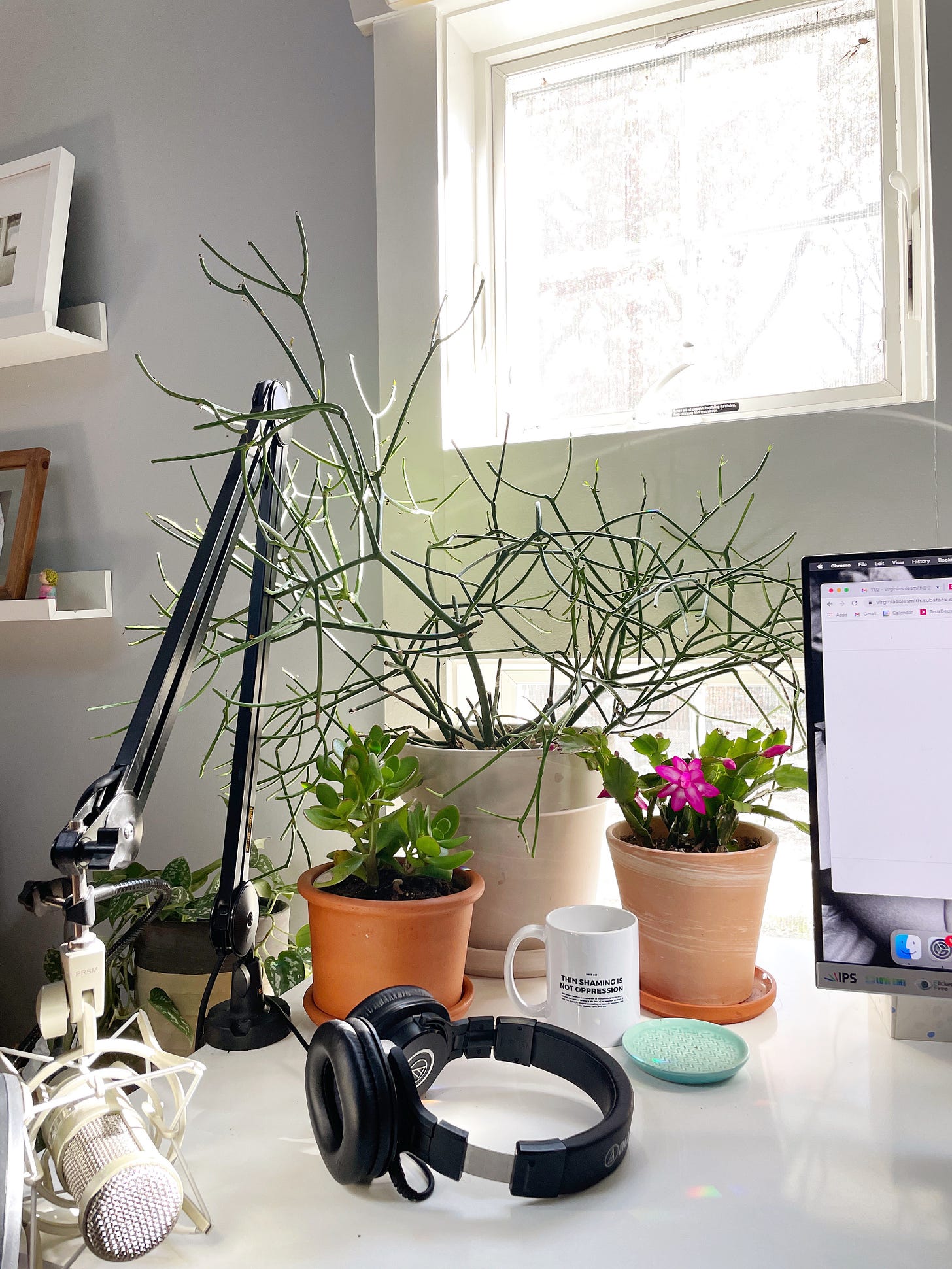


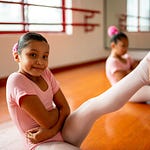
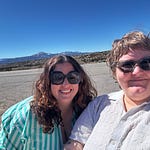


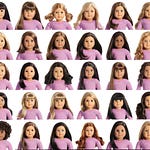


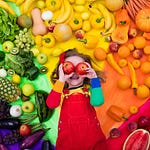
"I Spent My Whole Life Wondering if There Was Room for Fat Folks to Fall in Love."